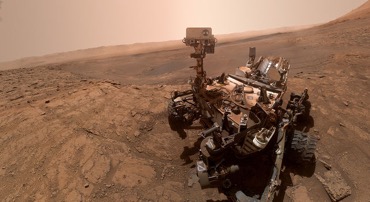Mars Rover 2020

This coming July, NASA is going to launch its next Mars rover with three main goals in mind: (1) determine whether life ever existed on Mars, (2) characterize the climate and geology of Mars, and (3) prepare for human exploration.
According to NASA, “the rover is car-sized, about 10 feet long, 9 feet wide and 7 feet tall.” Remarkably, it weighs less than a compact car.
The duration of the mission will be about one Mars year, which is equivalent to about 687 earth days. Nine months after its launch, the rover will land on February 18, 2021, when it will parachute onto the red planet’s surface.
Scientists have been curious about life on Mars for years. There have been four previous rovers on Mars: Sojourner (1997), Spirit and Opportunity (2004), and Curiosity (2015). The 2020 rover has yet to be given a name! NASA has also launched several orbiters, spacecrafts that do not land on the surface, including the 1971 Mariner 9 and the 2015 MAVEN.
These spacecrafts have led to significant findings. The Opportunity rover revealed that the mineral hematite, which usually forms in water, is present on the red planet, and also found gypsum, a soft sulfate, that was likely formed from flowing water.
Opportunity has also studied Mars’ craters, providing scientists with data that has allowed us to better study and understand craters on earth. The Spirit rover discovered silica, another mineral associated with water and water vapor that is commonly found as mineral quartz.
According to NASA, “The Mars 2020 mission takes the next step by not only seeking signs of habitable life on Mars in the ancient past but also searching for signs of past microbial life itself.”
In other words, the 2020 rover will not only be looking for signs of water on Mars but also for evidence of bacteria itself. The rover will collect samples of rocks and soil and “set them aside in a ‘cache’ on the surface of Mars;” a later mission will then retrieve those caches and look for “biosignatures” in the samples that indicate life.
Unfortunately, we will have to wait for the second mission to retrieve the caches, so it will be a while before we learn of the results from the 2020 rover’s data.
Until then, we can continue speculating about the aliens and kryptonite in space. You can learn more about space at Strawbridge Observatory in Ardmore or at Drexel University’s Observatory in Philadelphia.

Chea Steinbach '20 is excited to begin his second year writing for the Banner. He describes himself as a "huge history buff" and also loves to write about...

